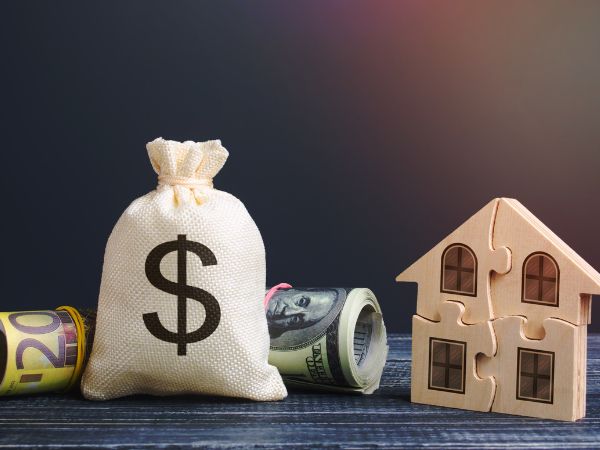Ever fantasized about transforming your abode into the perfect dream home? Home renovation loans could be your magic wand! These financial tools allow homeowners to borrow funds specifically for sprucing up their living spaces. But wait, there’s more to it than just getting the cash. In this comprehensive guide, we’ll journey through the ins and outs of these loans, ensuring you make an informed decision. So, buckle up, and let’s dive into the world of home renovation financing!
What Are Home Renovation Loans?
At their core, home renovation loans are financial products designed for funding home improvement projects. Unlike standard loans, these are tailored specifically for renovations, repairs, and upgrades. But hey, it’s not a one-size-fits-all affair. There’s a variety of loan types to suit different needs and scenarios.
Types of Home Renovation Loans
- Home Equity Loans: These are like a second mortgage. You borrow against the equity you’ve built up in your home.
- Personal Loans: Unsecured and based on your creditworthiness. A quick-fix for smaller projects.
- Home Equity Lines of Credit (HELOC): Similar to a credit card, it offers a revolving line of credit.
- FHA 203(k) Loans: Government-backed loans designed for major home renovations.
- Cash-Out Refinance: This involves refinancing your existing mortgage for more than you owe and pocketing the difference.
Each type has its perks and quirks, so it’s crucial to pick the one that aligns with your needs.
Deciphering the Costs and Benefits
Analyzing the Cost
Home renovation loans aren’t freebies – they come with costs like interest rates, fees, and sometimes, collateral. It’s vital to crunch these numbers:
- Interest Rates: These can vary widely. Shop around and compare rates.
- Fees: Origination fees, closing costs, appraisal fees – they all add up.
- Repayment Terms: Longer terms might reduce monthly payments but increase total interest.
Weighing the Benefits
But let’s not forget the sunny side! Renovating can increase your home’s value, enhance your living experience, and sometimes even reduce utility costs with energy-efficient upgrades.
How to Qualify for a Home Renovation Loan
Qualifying for these loans isn’t a walk in the park, but it’s not scaling Everest either. Here’s what lenders typically look at:
- Credit Score: The higher, the better. It affects your interest rates and loan terms.
- Debt-to-Income Ratio (DTI): Lenders love a low DTI. It means you’re not drowning in debt.
- Home Equity (for secured loans): More equity means more borrowing power.
- Proof of Income: Show them the money! Lenders want to see steady income streams.
Step-by-Step Application Guide
Ready to apply? Here’s your roadmap:
- Assess Your Needs: What renovations are you planning? How much will they cost?
- Check Your Credit Score: Know where you stand before approaching lenders.
- Shop Around: Don’t settle for the first offer. Compare different lenders.
- Gather Documentation: Income proof, tax returns, home appraisal – get these ready.
- Apply: Fill out that application and cross your fingers!
Using the Loan Wisely
Got the loan? Great! But hold your horses. It’s crucial to use the funds wisely:
- Stick to Your Budget: It’s easy to get carried away. Keep an eye on expenses.
- Focus on Value-Adding Renovations: Think long-term. What upgrades will increase your home’s value?
- Avoid Overcapitalizing: Don’t spend more on renovations than what they’ll add to your home’s value.
Home Renovation Loans: A Closer Look
Let’s break down the intricacies of these loans:
Interest Rates and Fees
Did you know interest rates and fees can make or break your renovation budget? Here’s what you need to consider:
- Fixed vs. Variable Rates: Fixed rates stay the same, while variable rates can fluctuate.
- Fees Structure: Understand all the fees involved. No one likes nasty surprises.
Repayment Plans
Your repayment plan impacts your monthly budget. Longer terms might ease the monthly burden but remember, more interest over time!
Common Mistakes to Avoid
Avoid these pitfalls:
- Underestimating Costs: Renovations often cost more than expected.
- Ignoring Fine Print: Terms and conditions matter. Read them.
- Overborrowing: Borrow only what you need. Debt isn’t a playground.
FAQs
Q1: Can I get a home renovation loan with bad credit?
A1: It’s tougher but not impossible. Expect higher interest rates and stricter terms.
Q2: Are there tax benefits to home renovation loans?
A2: Sometimes, especially if the improvements add to the home’s value. Consult a tax professional.
Q3: Can I use a home renovation loan for DIY projects?
A3: Absolutely! As long as you’re improving your home, how you do it is up to you.
Summary
sHome renovation loans can be a stepping stone to your dream home. They offer the financial backing for various upgrades and improvement. However, it’s essential to approach them with a clear plan and understanding. Remember, they’re tools – powerful yet demanding respect and careful handling. Choose wisely, plan meticulously, and soon, you’ll be living in the home you’ve always envisioned!





